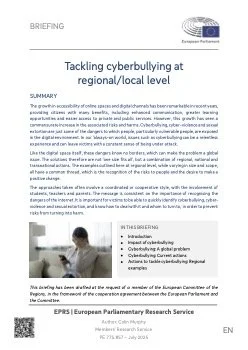By Ghayda Hassan 1 Sébastien Brouillette-Alarie 1 Sarah Ousman 1 Deniz Kilinc 1 Éléa Laetitia Savard 1 Wynnpaul Varela 1 Lysiane Lavoie 1 Arber Fetiu 1
Over the past two decades, planned and executed attacks attributed to extremist movements or “lone actors” have intensified and spread throughout many parts of the world, amplifying the fears of local populations and prompting a number of governments to invest significant sums of money into preventing violent radicalization and extremism Despite these investments, current knowledge regarding best practices for prevention remains disparate, and the effectiveness of current practices has not yet been clearly established. This means that trillions of dollars are currently being spent funding programs whose effectiveness and potential side effects are unknown. Considering the above, the Canadian Practitioners Network for Prevention of Radicalization and Extremist Violence (CPNPREV; https://cpnprev.ca/) has conducted a systematic review on the effectiveness of primary, secondary, and tertiary prevention programs in the field of preventing violent extremism (PVE). The goals of this review were threefold: 1) to determine if primary, secondary, and tertiary prevention programs are able to counter violent radicalization; 2) to identify specific program modalities associated with a higher chance of success or failure for the targeted populations; and 3) to assess the quality of the literature in order to identify less reliable evidence, knowledge gaps, and studies which should be given more weight in the interpretation of results The review integrated evidence on the following: a) religiously-inspired (e.g., Islamist), right-wing, extreme-left, and “singleissue” (e.g., misogyny) violent radicalization; b) outcomes classified by prevention levels; and c) benefits/harms, costs, transferability, and community-related implementation issues when mentioned by the authors. We used systematic review methods developed by the Campbell and Cochrane collaborations. The logic model driving the review is grounded in an ecosystemic public health model, dividing programs into primary, secondary, and tertiary prevention levels. Because the outcomes of primary/secondary PVE programs and those of tertiary prevention programs were very disparate, we decided to treat results of primary/secondary prevention programs separately from those of tertiary prevention programs. However, we used a common method for both reviews. Of the 11,836 studies generated from the searches undertaken (up to June 2019), only 56 were found to be eligible for this review (i.e., they included an empirical—quantitative or qualitative—evaluation of a primary or secondary prevention initiative using primary data). Among these, 23 were found to be of insufficient methodological quality (score of 3/10 or less on the Quality of Study Assessment tool) and were therefore excluded The final set of studies comprised 33 evaluations of primary or secondary prevention programs. They reached a total sample of 6,520 individuals from 15 countries, with sample sizes ranging from 5 to 1,446 participants (M = 210.32, SD = 396.0). Most of the identified studies (k = 24) evaluated programs targeting violent Islamist radicalization. Nine studies assessed the outcomes of “general” prevention programs, that is, programs that do not target a specific type of violent radicalization but rather aim to improve openness towards others, respect, civic education, etc., within both “vulnerable” individuals and the general population. Only one study assessed programs targeting violent far-right radicalization, and none targeted far-left or single-issue violent radicalization. Among the 33 program evaluation studies, 18 reported mostly positive outcomes, seven reported mixed outcomes (both positive and negative), and eight reported mostly negative outcomes. Of note, all negative assessments were related to initiatives under Prevent, the UK’s national PVE strategy. On average, primary and secondary prevention programs seemed more effective than targeted primary prevention programs. However, this result is inevitably linked to the multiple negative assessments of Prevent, a strategy encompassing multiple targeted primary prevention programs.
Montreal::Canadian Practitioners Network for the Prevention of Radicalization and Extremist Violence.,
2021. 152p.



